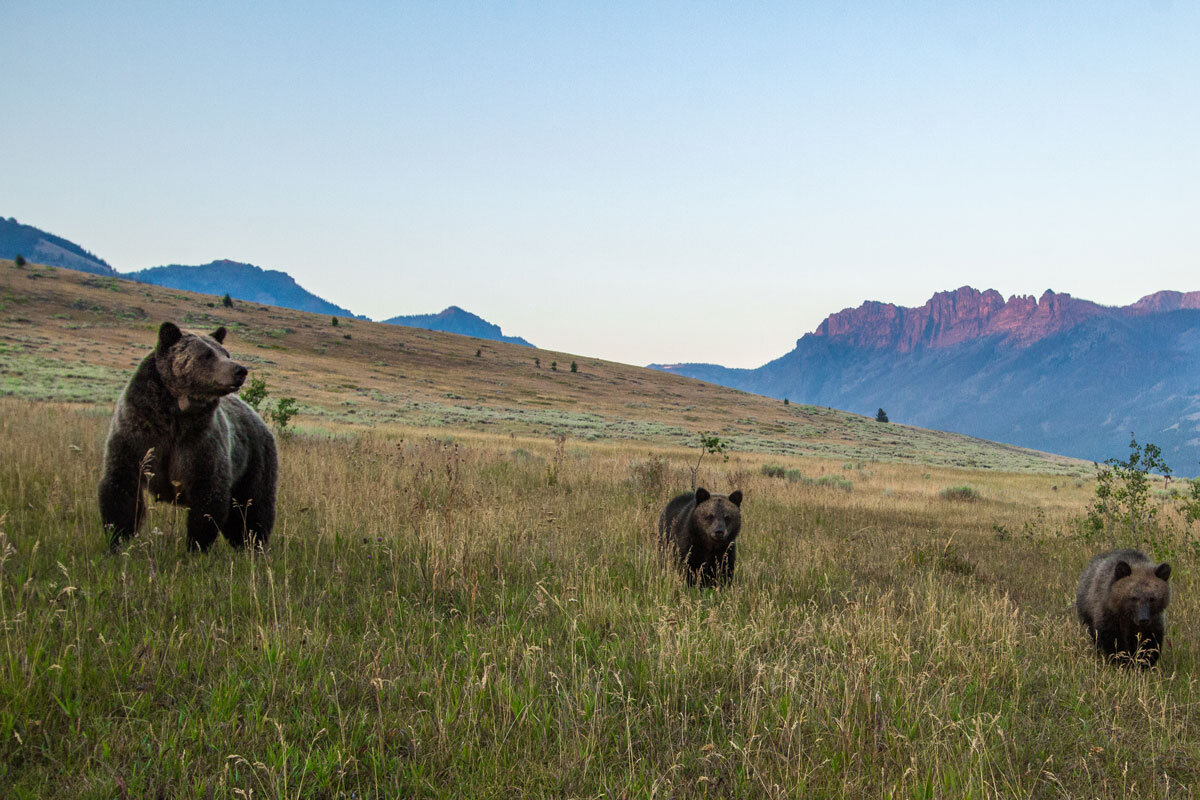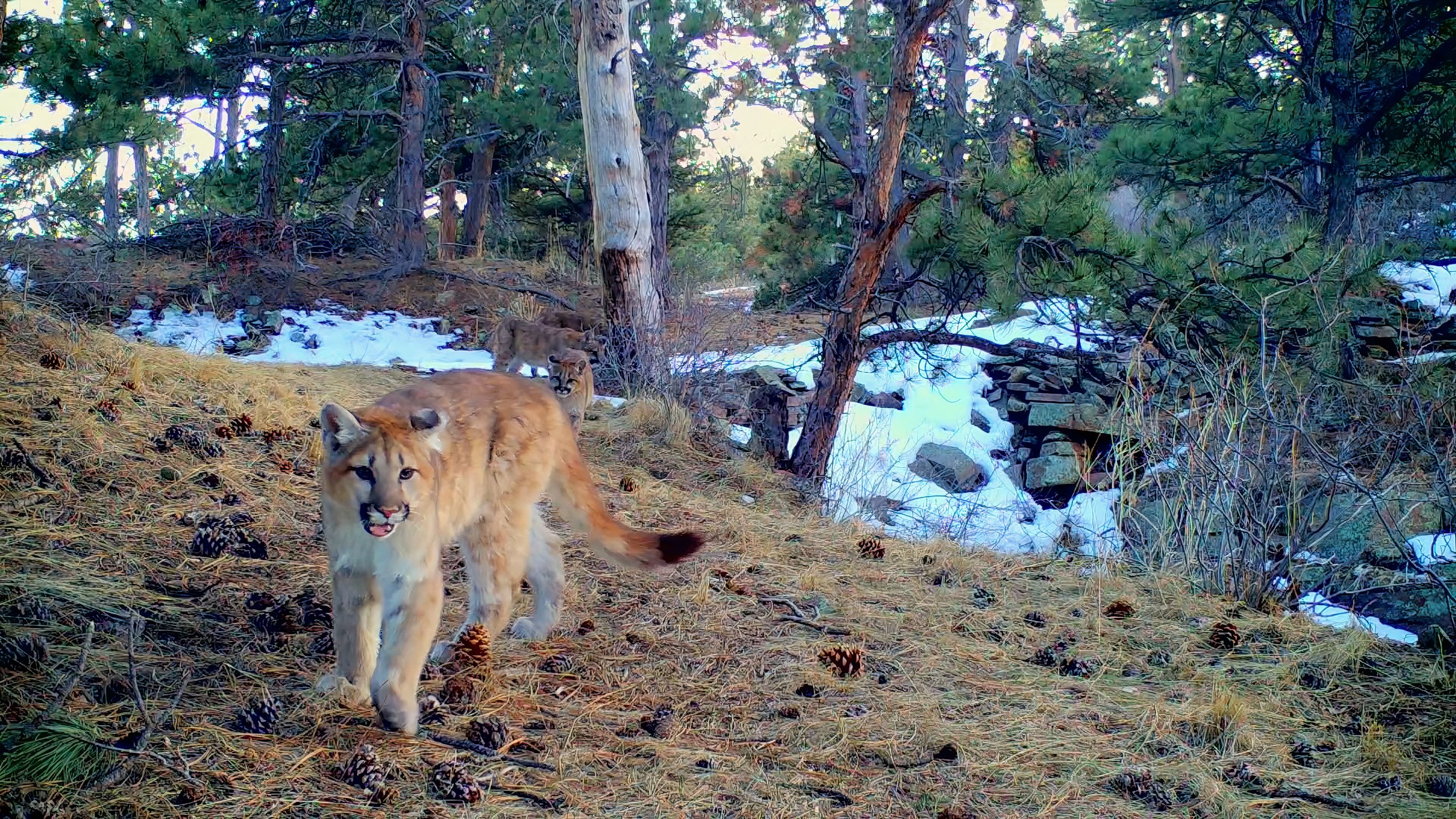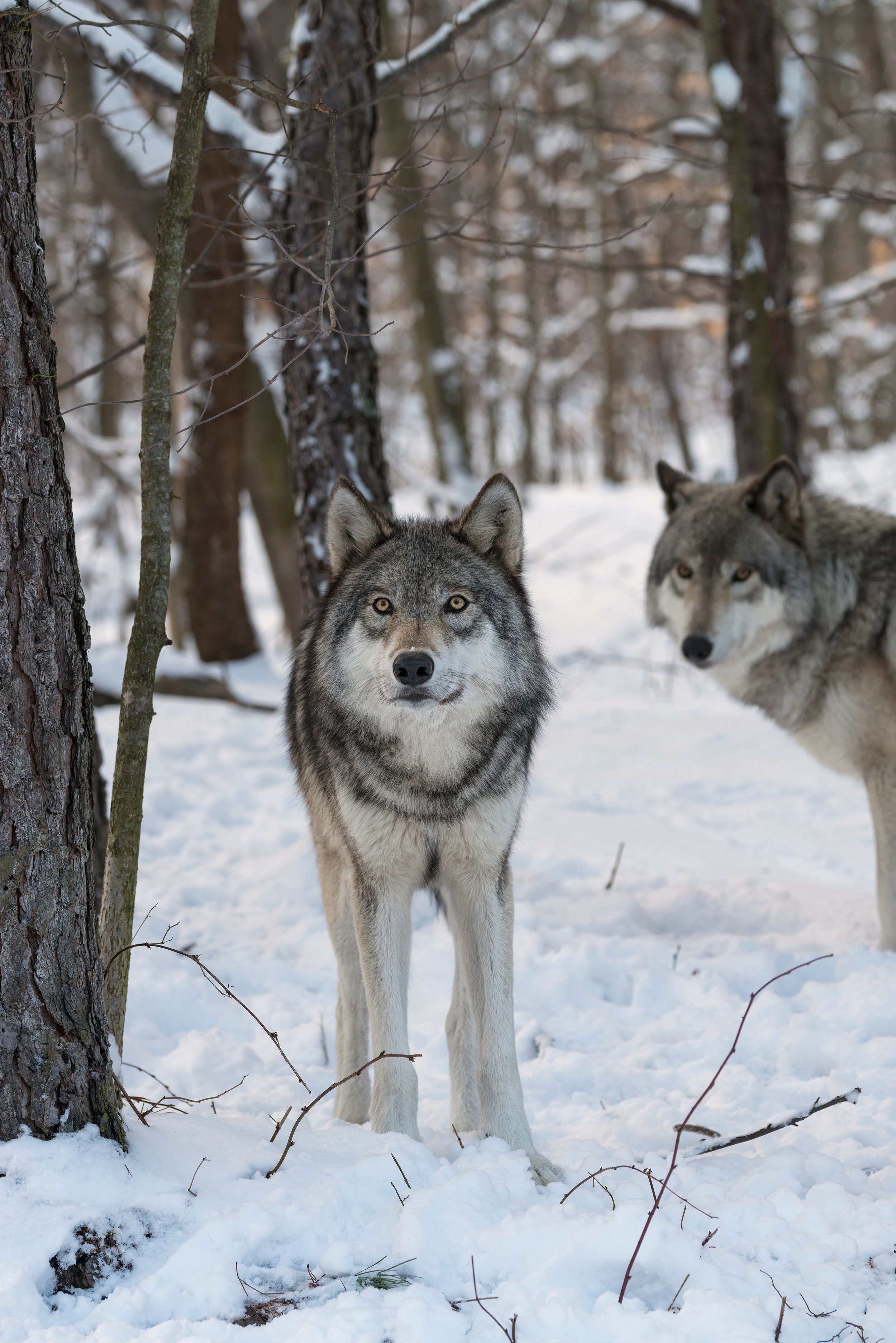
What We Do
People and Carnivores works proactively to prevent human-carnivore conflicts so that grizzly bears, black bears, wolves, and mountain lions can move freely and safely between habitats.
Our team of field specialists works on the ground with private landowners and public land and wildlife managers to apply tools that either remove attractants from the landscape, or keep wild carnivores away from them. This keeps wildlife moving and people and property safe.
We use a wide array of tools and practices to remove attractants from the landscape or keep wild carnivores away from them. We also train people in conflict prevention.
Why focus on large carnivores?
The four large carnivores–grizzlies and black bears, mountain lions and wolves–are “top,” or apex predators, and keystone species. This means they are essential to healthy natural systems; if we protect them, we protect many wildlife species.
Large-bodied mammals are the most challenging, yet some of the most important, to conserve. Large carnivores once thrived across the West, but now exist in small, regional populations. To help them survive, expand their range, and connect with others, we must keep them out of conflicts with people.
In a rapidly developing Northern Rockies region, conflict prevention–or coexistence–is one of the best ways to protect both wildlife and people.
In order for ecosystems to be healthy, large carnivores must move around and connect between populations.
But most of the landscape, even in the West, is developing rapidly. And as wild carnivores travel, they encounter “attractants” – unnatural food sources that draw them in such as garbage, livestock, crops, animal/pet foods, and more. When wild carnivores attempt to access human food sources, they come around people, sometimes damage property, and if they get a “food reward,” become habituated, or otherwise present a risk to people or property, carnivores are usually killed. These conflicts also create negative intolerance in people and wildlife managers.






